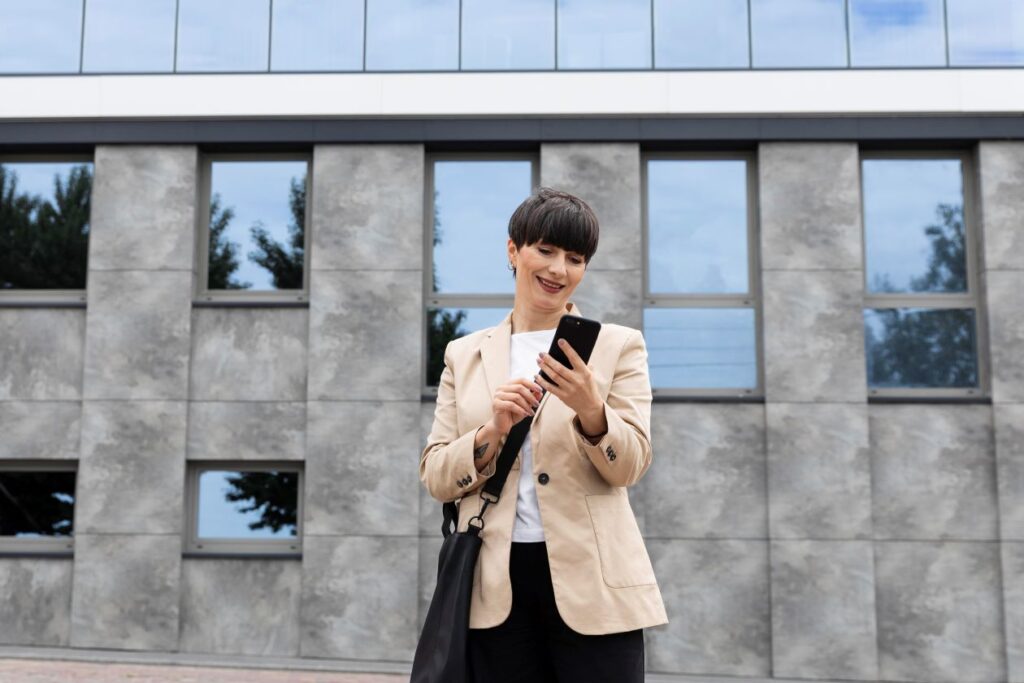The Evolution of Job Applications in the Digital Age

Likewise, change permeates the world of employment or more precisely the job market. Gone was the day when job seekers relied on a cover letter and a resume to making their applications; The job application revolution has had many effects on the tools, templates and even the expectations of the job applicants and employers. The digitization of the workplace together with social media influence has created an environment where applying for jobs is more fun and active, completely changing the concept of self-presentation. It’s worth mentioning one more significant change marketing in vertical video as a normative component of presentation of skills and practicum.
Not only does this take into consideration the needs of the natives and all who live in a digitally driven world but also employers who desire to go beyond only reading the papers of the self-portraits of candidates, are satisfied. The next logical step would be to examine how does one now apply for the positions in this day and age, examine video profiles more in detail and explain the reasons for emerging of this phenomena.
The Traditional Job Application: An Application Process Based on Physical Paper
Not so long ago, the recruitment procedure was characterized by the time-honored combination of paper CVs joined with other documents called cover letters. There was so much effort put into the designing of the CVs by the job seekers as they had to make sure that the font size, font style, margins and even the shapes of the bullets used were in order. After this activity is done, these papers are printed of high quality and then sent via mail or hand delivered to employers in most times of hiring. All of these processes were time consuming and laborious which in turn became disadvantageous for job seekers who could submit only a few numbers of applications at that time since the process required so much physical input.
On the other hand, the screening of resumes consumed a great deal of time, as employers would instead have to decide about someone over a small pile of resumes. Without much understanding of the candidate’s character or other applicable soft skills, one could not be blamed for placing most of their emphasis on the candidate’s credentials, previous jobs or any educational qualifications. More often than not; it would seem that the system is so structured and proceeds along one linear direction to favor those whose understanding of kith and kin is confined to a worthy family tree rather than people with interesting or quantifiable peculiar abilities.
But as the timeline of this world changed into a new world of nowadays generation, so did the methods of looking for jobs.
The New Era of Digital Resumes and Candidacy Websites

The end of the 20th century and the start of the new millennium witnessed the emergence of electronic means of job applications facilitated by the ever increasing usage of the world wide web. With time instead of printing hard copy resumes, applicants would make online documents that could either be mailed or posted in the companies’ websites. This transformational change signified the commencement of new frontiers in the modern time frame of the job acquisition.
Job seekers in America were not strangers to the kind of service offered by online employment databases such as Monster and CareerBuilder, millions of job opportunities were at the disposal of a job seeker. With this new application system, applicants were able to send an impressively large number of applications in an extremely short period rather than sending each and every resume through mails physically which greatly sped up the process. Simultaneously, several employers could also save time when scanning through job applicants since they were now able to use indexing systems that eliminated search for specific resumes because there were embedded filters.
All of these advances in technology turned out to be useful but still depended on the same basic features: monolithic CV type which solely contains information about work experience, education, and skills. It can be argued that there was some detachment with the digital application – this was perhaps an attempt to engage or connect with the applicants. The candidates were turned into points on a matrix – whether they got an impression across or not was largely dependent on the actual application.
Emergence of Social Media in Application Process
As social networking sites like Linkedin, Twitter, Facebook came into power in mid 2000s, both employers and those seeking jobs started to explore new avenues of interaction. Employers and individuals seeking employment turned to Linkedin and other similar resources. While other sites like Monster focused solely on postings of job offers, LinkedIn changed the game completely by enabling users to create rich and functional profiles instead of uploading a boring CV.
All of a sudden, applying for jobs was no longer restricted to sending CVs and cover letters. Job applicants could create an online image, demonstrating their professional knowledge and experience to the employers immediately. LinkedIn also added as a feature the networking of the users through such sites formally enabling the users to make contact with the hiring personnel’s, the recruiters and the industry leaders further diluting the boundaries between the conventional processes of applying for jobs and the networking for jobs
The same was true for twitters or instagram where there were also ways how the candidates would be noticed more. Some job seekers even turned to Twitter to strike up conversations with company representatives, others went on to Instagram to display examples of their creative works, photographs or even designs. These platforms provided more actions to the candidates apart from the usual proving of their qualifications seeking cover letters.
But the development would not end there. So did the social media, so did the things that people were looking for when applying for jobs. It is vertical video that would be the next wave of innovation and the source from where the innovation comes from cannot be more improbable.
The Emergence of Vertical Video: A Change in How Job Seekers Market Themselves
With the invention of TikTok, the use of the Instagram Stories feature, and Snapchat, vertical video format became the preferred way to create and view media. This shift in the way media is consumed has significant consequences on how job seekers brand themselves and how employers look at the candidates.
Vertical video is brief, active, and primarily oriented towards those with a mobile. It is fun, easy to make, and quite flexible in terms of personalizing and making it more creative. In terms of vertical video application in job application, this format makes the applicant express themselves, their skills, experiences, and personalities more than a boring CV could ever portray. Instead of drawing an elaborate picture of their qualifications on paper, candidates can actually do it on the spot.
For instance, if I am a graphic designer, I would prepare a vertical video, take all the stakeholders and walk them through all the steps of developing the design, starting from the development of the concept and moving to the final stages of the project. A marketing expert might record a segment of the video talking about a specific marketing campaign they have successfully led, showing clips from the campaign videos and even some numbers for good measure. A software engineer might record themselves quickly coding a small project in a chosen language for demonstration purposes.
Why the Vertical Video Loves

Authenticity and Personality: Finding a job gives opportunities to candidates to bring out their personality, passion and enthusiasm in ways previous documents like resumes and cover letters cannot do. As a result, Employers will have a clearer picture of the candidate and in turn, help determine whether they fit into the organization or not.
Efficiency: In just a few seconds, a good vertical video can deliver extensive information about a candidate’s competencies and experiences. Modern employers are keen on making swift decision, devoid of reading paragraphs of qualifications melted in an extensive resume.
Visual Impact: People are, of course, visual beings and vertical video takes advantage of this natural tendency to leave a lasting impression. Many candidates use video to enhance their rememberability, through a spell bounding fiery opening, clips of the prior works, or even a clever hat.
Engagement: Inherent to vertical video design and consumption is a mobile device which makes it very suitable for the busy style of most modern hiring managers. It is simpler to capture the interest of people without any distraction with video applications than with other leading methods.
Interactive Storytelling: Vertical video unlike a normal resume is able to tell a story in a way that the reader can take an active part in it. There is no need to worry about sending boring applications because candidates can tell employers a story about themselves using stories, pictures and even their voices which makes the application process quite interesting.
The Future of Job Applications: Incorporating Video for an AI
Looking into the future, there is no question that the trends of job detours to a more engaging and interactive level will only grow stronger. Vertical video is already and advancement, and so the need of AI and VR technology in the recruitment process is beginning to be realized too.
Some ATS feature automation in resume screening and requisition governors who fetch candidate’s social media profiles, and more so even scrutinize video applications for expressions and other desired voids. Such development will also hinge around matching service seekers and takers with not just qualifications but also fit with companies values and working environment there in.
For instance, where will such video applications be in the next decade? Any VR application could enable candidates to take video applications a notch higher by designing an animated scene setup of the employers potential view. Consider this: how about a video wherein a candidate is giving the employer a round of his workstation and him doing his work inside a computerized simulation, or while attending that extremely ambitious virtual interview but on a simulated
Conclusion: The Evolving Landscape of Job Applications
The transition of the job application process development in today’s society has been remarkable. From paper resumes and cover letters now we even have video applications, social media and stepping back even more, we had teamwork oriented perspectives.